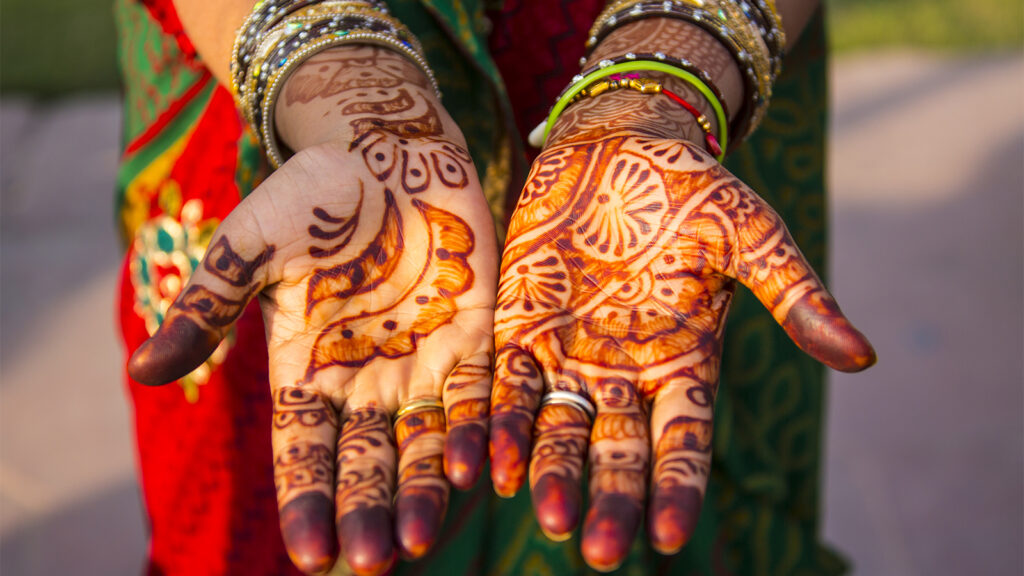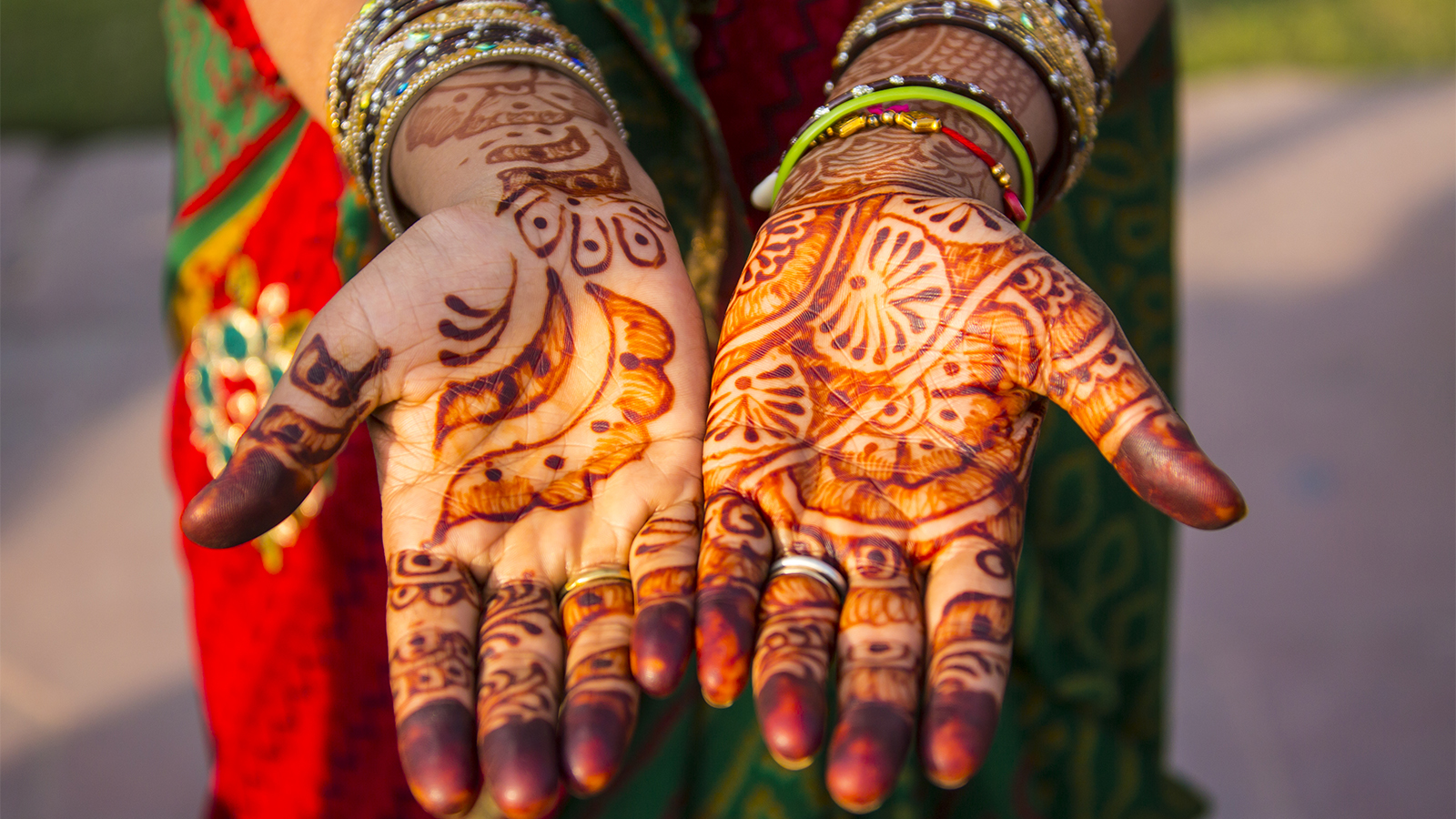
Decoding Henna Tattoo Color: Understanding the Shades and Safety
Henna tattoos, a form of temporary skin decoration, have been used for centuries across various cultures for celebrations, rituals, and aesthetic purposes. The allure of henna tattoo color lies in its natural origin and the intricate designs it allows. However, understanding the nuances of henna tattoo color, particularly its safety aspects, is crucial before adorning your skin. This article delves into the world of henna tattoo color, exploring its natural variations, potential risks, and how to ensure a safe and beautiful experience.
The Natural Palette of Henna
Natural henna, derived from the Lawsonia inermis plant, produces a stain that ranges from orange to reddish-brown. The exact shade depends on several factors, including the quality of the henna powder, the preparation method, the skin type, and the duration the paste remains on the skin. Fresh, high-quality henna typically yields a richer, darker stain. Understanding these natural variations is the first step in appreciating the art of henna tattoo color.
Factors Influencing Henna Color
- Henna Powder Quality: The fresher and finer the henna powder, the better the color payoff.
- Preparation: Adding lemon juice and sugar to the henna paste helps release more lawsone, the dye molecule.
- Skin Type: Individuals with warmer skin tones often find that henna stains darker on them.
- Application Time: The longer the henna paste stays on the skin, the darker the stain will be. Ideally, it should remain for at least two hours, and preferably longer.
- Post-Application Care: Avoiding water contact immediately after removing the paste and applying natural oils like coconut or olive oil can help deepen the henna tattoo color.
The Danger of “Black Henna”
It’s essential to distinguish between natural henna and so-called “black henna.” Natural henna never produces a black stain. The term “black henna” usually refers to a paste containing a chemical dye called paraphenylenediamine (PPD). PPD is commonly used in hair dyes but is illegal for direct application to the skin in many countries due to its high risk of causing severe allergic reactions, permanent scarring, and skin depigmentation. The allure of a quick, dark henna tattoo color is not worth the risk.
Identifying Black Henna
- Color: A truly black stain is a red flag. Natural henna stains range from orange to reddish-brown.
- Application Time: Black henna often stains within 30-60 minutes, while natural henna requires several hours.
- Smell: Black henna may have a chemical odor.
- Price: Black henna is often cheaper than natural henna.
If you suspect you’ve been exposed to black henna, seek immediate medical attention. [See also: Treating Allergic Reactions to Black Henna].
Ensuring Safe Henna Practices
To ensure a safe and enjoyable henna experience, follow these guidelines:
Choosing a Reputable Artist
Research the artist thoroughly. Look for reviews, ask about their ingredients, and ensure they use only natural henna. A responsible artist will be transparent about their practices and prioritize your safety. Ask to see examples of their previous work to gauge the typical henna tattoo color achieved with their paste.
Checking the Ingredients
Always inquire about the ingredients of the henna paste. It should consist of natural henna powder, lemon juice, sugar, and essential oils like lavender or tea tree. Avoid any paste containing PPD or other chemical dyes. Don’t hesitate to ask for a sample to test on a small area of your skin before committing to a full design. This can help identify any potential allergic reactions before they become widespread.
Understanding Aftercare
Proper aftercare is crucial for achieving the desired henna tattoo color and prolonging the life of your design. Keep the paste on for as long as possible, ideally several hours. Avoid washing the area with soap and water immediately after removing the paste. Instead, gently scrape off the dried paste and apply a natural oil like coconut or olive oil. Avoid excessive exposure to water and harsh chemicals. Moisturizing regularly will also help maintain the vibrancy of the stain. [See also: Henna Tattoo Aftercare Tips].
Henna in Different Cultures
The significance of henna tattoo color and designs varies across cultures. In Indian weddings, darker, richer stains are often associated with good luck and a strong bond between the bride and groom. The intricacy of the designs also reflects the importance of the occasion. In some African cultures, henna is used for coming-of-age ceremonies and other significant life events. Understanding the cultural context adds another layer of appreciation to the art of henna.
The Evolution of Henna Art
Henna art has evolved significantly over time, with modern artists incorporating contemporary designs and techniques. While traditional patterns remain popular, there’s a growing trend towards personalized designs that reflect individual styles and preferences. The beauty of henna lies in its versatility and its ability to adapt to different cultural contexts and artistic expressions. Even the application techniques have advanced, with artists using cones and stencils to create intricate and precise designs. The range of achievable henna tattoo color hues has also expanded with the use of different essential oils and additives, although always within the safe parameters of natural henna.
The Science Behind Henna Color
The staining ability of henna comes from a molecule called lawsone, present in the leaves of the henna plant. When henna paste is applied to the skin, lawsone binds to the proteins in the outer layer of the skin, resulting in a temporary stain. The concentration of lawsone, the preparation method, and the skin’s pH level all influence the intensity of the henna tattoo color. Understanding the science behind the process can help you appreciate the complexity of this ancient art form.
Factors Affecting Lawsone Release
- Acidity: Lemon juice, being acidic, helps release more lawsone from the henna leaves.
- Temperature: Warm temperatures promote the release of lawsone.
- Time: Allowing the henna paste to sit for several hours before application ensures optimal lawsone release.
Henna Alternatives and Considerations
For individuals with sensitive skin or allergies to natural henna, there are alternative options available, such as jagua. Jagua is derived from a fruit and produces a bluish-black stain. However, it’s essential to research jagua thoroughly and ensure it’s pure and free from any additives. Always perform a patch test before applying any new substance to your skin. Also consider the longevity of temporary tattoos versus the commitment of permanent tattoos. The henna tattoo color fades naturally over time, making it a less permanent option.
Jagua vs. Henna
While both jagua and henna offer temporary skin decoration, they differ in several key aspects:
- Color: Henna stains orange to reddish-brown, while jagua stains bluish-black.
- Origin: Henna is derived from the henna plant, while jagua is derived from a fruit.
- Allergenicity: Some individuals may be allergic to jagua, although it’s generally considered less allergenic than black henna.
Conclusion: Embracing the Beauty of Natural Henna Color
Henna tattoo color is a beautiful and versatile art form with a rich history. By understanding the nuances of natural henna, recognizing the dangers of black henna, and following safe practices, you can enjoy the beauty of henna without compromising your health. Choose reputable artists, check the ingredients carefully, and prioritize aftercare to achieve the desired henna tattoo color and prolong the life of your design. Remember, the key to a safe and beautiful henna experience lies in knowledge and awareness. The natural hues, ranging from warm oranges to deep reddish-browns, offer a stunning palette for self-expression and cultural appreciation. So, embrace the art, respect the traditions, and adorn your skin with confidence and safety.

